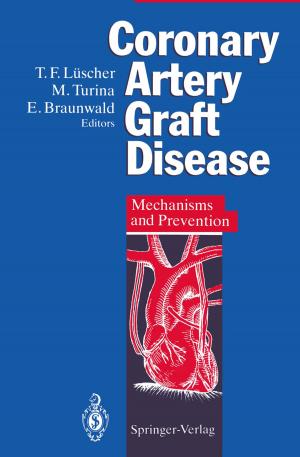Signaling Pathways for Translation
Insulin and Nutrients
Nonfiction, Science & Nature, Science, Other Sciences, Molecular Biology, Biological Sciences, Biochemistry| Author: | ISBN: | 9783642566882 | |
| Publisher: | Springer Berlin Heidelberg | Publication: | December 6, 2012 |
| Imprint: | Springer | Language: | English |
| Author: | |
| ISBN: | 9783642566882 |
| Publisher: | Springer Berlin Heidelberg |
| Publication: | December 6, 2012 |
| Imprint: | Springer |
| Language: | English |
The articles in the present volume are by major contributors to our under standing of signaling pathways affecting protein synthesis. They focus pri marily on two extracellular anabolic signals, although others are included as well. Insulin is one of the best-studied extracellular regulators of protein syn thesis. Several of the known pathways for regulation of protein synthesis were elucidated using insulin-dependent systems. Regulation of protein synthesis by amino acids, by contrast, is an emerging field that has recently received a great deal of attention. The dual role of amino acids as substrates for protein syn thesis and regulators of the overall process has only recently been recognized. Since amino acids serve as precursors for proteins, one might expect that with holding an essential amino acid would inhibit the elongation phase. Surpris ingly, research has shown that it is the initiation phase of protein synthesis that is restricted during amino acid starvation. Understanding the mechanisms by which the biosynthesis of proteins is reg ulated is important for several reasons. Protein synthesis consumes a major portion of the cellular ATP that is generated. Therefore, small changes in protein synthesis can have great consequences for cellular energy metabolism. Translation is also a major site for control of gene expression, since messenger RNAs differ widely in translational efficiency, and changes to the protein syn thesis machinery can differentially affect recruitment of individual mRNAs.
The articles in the present volume are by major contributors to our under standing of signaling pathways affecting protein synthesis. They focus pri marily on two extracellular anabolic signals, although others are included as well. Insulin is one of the best-studied extracellular regulators of protein syn thesis. Several of the known pathways for regulation of protein synthesis were elucidated using insulin-dependent systems. Regulation of protein synthesis by amino acids, by contrast, is an emerging field that has recently received a great deal of attention. The dual role of amino acids as substrates for protein syn thesis and regulators of the overall process has only recently been recognized. Since amino acids serve as precursors for proteins, one might expect that with holding an essential amino acid would inhibit the elongation phase. Surpris ingly, research has shown that it is the initiation phase of protein synthesis that is restricted during amino acid starvation. Understanding the mechanisms by which the biosynthesis of proteins is reg ulated is important for several reasons. Protein synthesis consumes a major portion of the cellular ATP that is generated. Therefore, small changes in protein synthesis can have great consequences for cellular energy metabolism. Translation is also a major site for control of gene expression, since messenger RNAs differ widely in translational efficiency, and changes to the protein syn thesis machinery can differentially affect recruitment of individual mRNAs.















